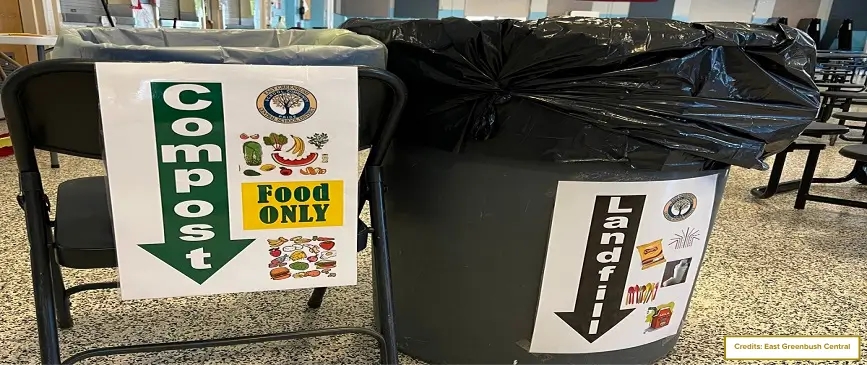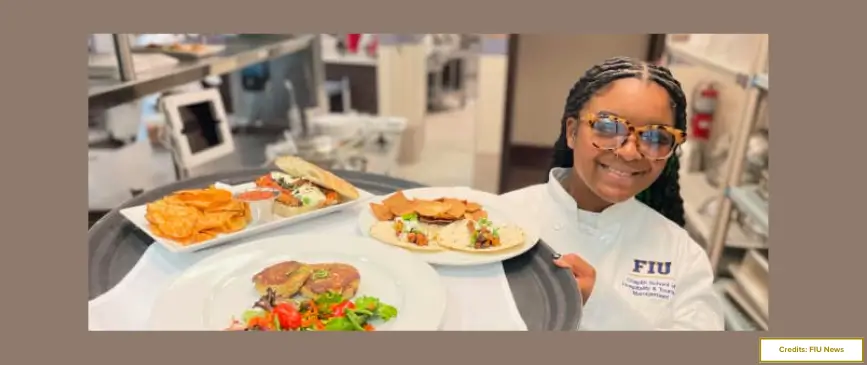Introduction
School cafeterias may seem like ordinary spots for students to eat and chat between classes. But time and time again, these lunchrooms have ignited debates that extend far beyond what’s on the tray.
From public shaming over lunch debt to government mandates on milk, cafeteria policies have become lightning rods for controversy.
What seems like a simple menu change can escalate into a firestorm that lands in headlines, school board meetings, and even state legislatures.
So, what makes school cafeteria food such a hot-button issue?
This guide takes you through some of the most debated, dramatic, and controversial cafeteria rules ever enforced and how they’ve shaped the future of school cafeterias.

Why School Cafeteria Policies Spark So Much Debate?
School food isn’t just about nutrition; it’s about everything. Unlike math homework or gym class, lunch crosses into parenting styles, cultural identity, political leanings, and financial reality. That’s why cafeteria rules often blow up faster than any spelling test scandal.
Here’s why:
- Food = Parenting Choices: When schools ban homemade lunches or inspect lunchboxes, many parents feel their authority is under attack.
- Health vs. Happiness: Broccoli is good for you, but forcing it onto a tray doesn’t guarantee it’ll be eaten.
- Financial Disparity Shows at the Table: From unpaid lunch debt to premium meal tiers, inequality often surfaces at lunchtime.
- Culture Matters: A cafeteria that doesn’t respect religious or ethnic food needs sends the message: “You don’t belong.”
- Politics Are Served Daily: Whether it’s Meatless Monday or vegan mandates, many cafeteria policies stir debates over freedom and government control.
- Kids Want a Say: Teens especially want food that reflects their preferences, not just the USDA food pyramid.
- Social Media Fuels the Fire: One viral photo of sad cafeteria food can spark national rage overnight.
Ultimately, a school cafeteria is one of the most emotional places on campus, especially for elementary school cafeteria kids who are still learning how to navigate routines, friendships, and food.
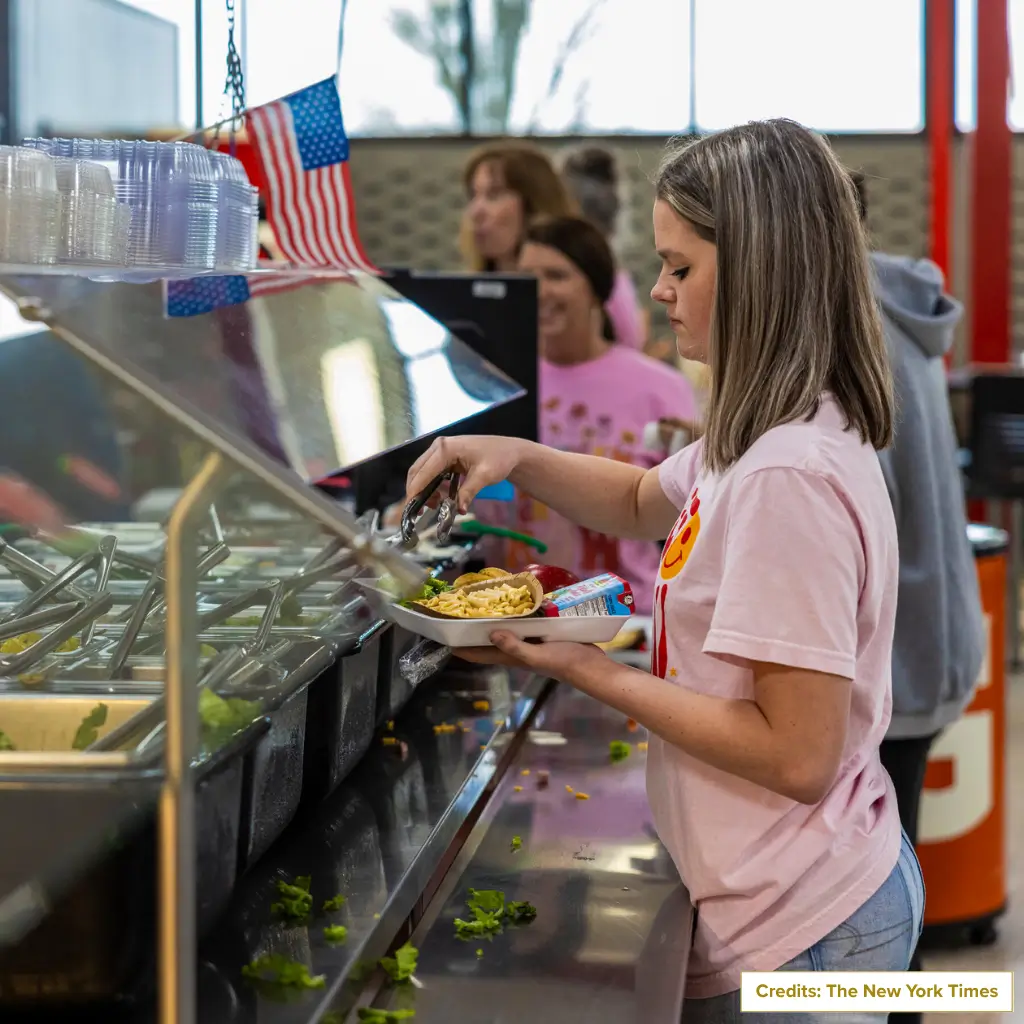
Suggested Reading: Cafeteria Rules For Elementary School
13 Most Controversial School Cafeteria Policies Ever
Let’s break down the most explosive school cafeteria policies that caused uproar, legislative action, and in many cases, LASTING CHANGE.
1. No Lunch for Debt
Arguably, the most heart-wrenching controversy involved denying food to children with unpaid lunch balances. Stories of hot trays being snatched from kids and replaced with cold sandwiches prompted cries of “lunch shaming.”
In one Pennsylvania case, a school even threatened foster care over lunch debt. The backlash led several states to pass laws requiring schools to feed all students regardless of unpaid bills. However, the core issue remains: How can schools balance budgets while feeding every child?
2. Banning Homemade Lunches
A Chicago school made headlines by attempting to ban all food brought from home. The reasoning? Uniform nutrition and safety. The response? Outrage. Parents insisted they could provide healthier, cheaper, or culturally appropriate meals. Critics saw the policy as an overreach, and eventually the school had to walk it back.
3. The Chocolate Milk Ban
In an attempt to cut sugar, many districts dropped chocolate milk. In Oregon, milk consumption plummeted 35%. Los Angeles reversed the ban after kids simply stopped drinking milk altogether. The controversy showed the importance of palatability, not just good intentions.
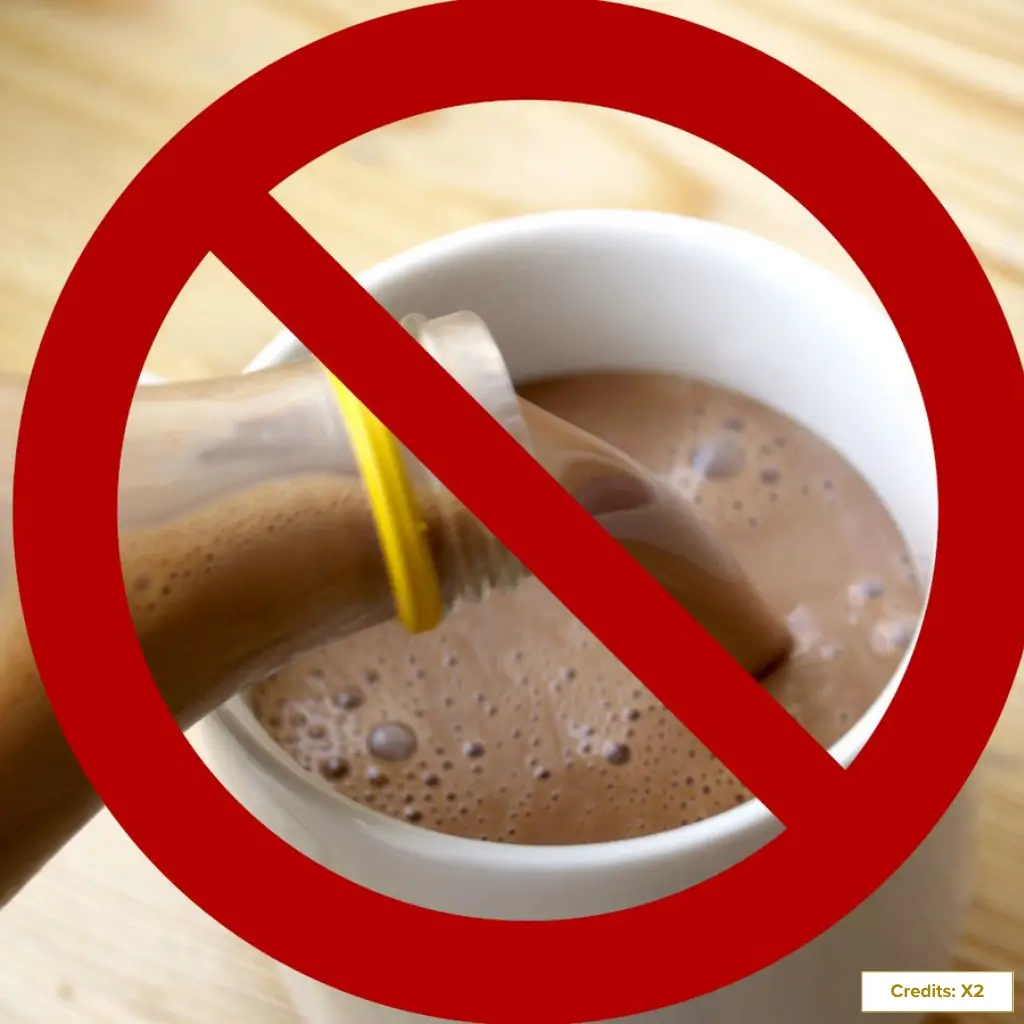
4. Meatless Mondays
This policy, intended to promote sustainability, drew strong reactions. While some parents applauded the climate-conscious move, others saw it as government overreach, especially in agricultural regions. One thing’s for sure: when it comes to food and politics, even meatless gets messy.
5. Vegan-Only Cafeterias
Some private school cafeterias went fully vegan to promote environmental ethics. But uproar was swift. Parents worried about nutrition, especially protein and B12, and accused schools of pushing ideology. Many institutions ultimately added dairy or vegetarian options.
6. Fast Food Bans
Districts that banned fast food options like Subway or Domino’s met resistance from students and finance officers. These branded meals often generated revenue. But critics said they sent mixed health messages. Removing fast food in schools created a classic health vs funding dilemma.
7. Culturally Insensitive Menu Days
Intended to promote diversity-themed lunches have sometimes gone wrong. Think: watermelon and fried chicken for Black History Month. These well-meaning efforts have turned offensive when not properly informed. Many schools now collaborate with parents and cultural consultants to get it right.
8. Soda Machines and Sugar Wars
Remember when vending machines dispensed Coke and Mountain Dew? That era’s mostly over. But removing soda in schools wasn’t easy. These machines once funded sports and arts programs. Many schools now offer flavored water or 100% juice as compromise options.

9. Peanut Bans and Allergy Fears
Protecting kids with allergies is vital, but how far is too far? Entire nut bans, allergy tables, and intense rules have led to tension. Some parents argue these policies stigmatize allergic children or limit lunch options too much. Today, many schools opt for a compromise on education, awareness, and designated allergy-safe zones.
10. Lunchbox Policing
In some schools, lunch monitors inspect kids’ meals for junk food and confiscate items like cookies or chips. While the goal is promoting healthier eating, this practice has drawn accusations of lunch shaming. Parents see it as overreach, and students feel embarrassed. The result? Many schools now favor education over enforcement.
11. Tiered Lunch Access
Offering better meals or perks for kids who pay more, such as faster lines or exclusive seating, has divided communities. Supporters say it brings in money. Critics say it creates a two-class lunchroom. Universal meals are gaining traction as a more equitable solution.
12. Lunchroom Surveillance
To fight food waste, some schools have installed cameras and tray scanners, and they even weigh leftovers. While intended to reduce food waste, many students and parents found it invasive. Critics said it turned cafeterias into “nutrition prisons.”
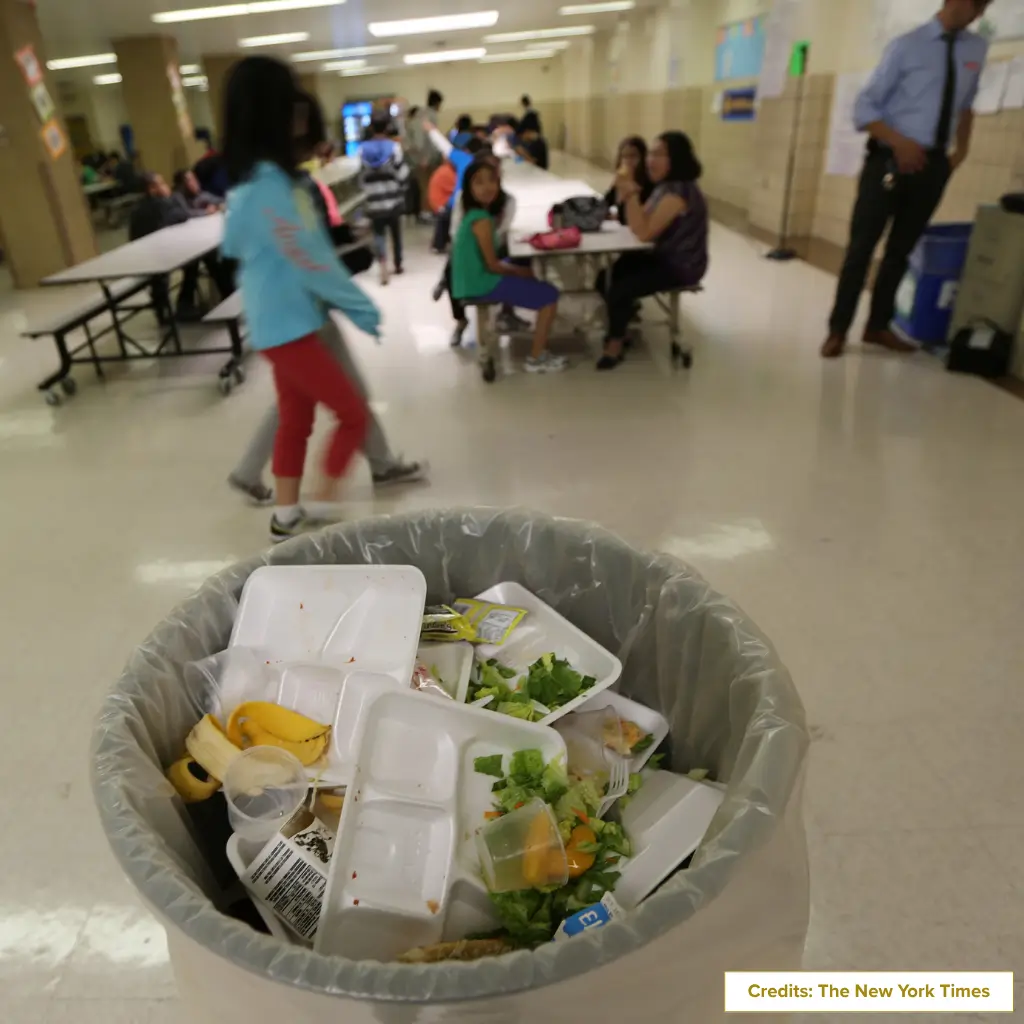
13. GMO-Free Menus
Driven by parent demand, some schools eliminated genetically modified ingredients. While science generally considers GMOs safe, the movement gained traction. Schools faced sourcing challenges, but supporters said it reflected growing concern over USDA school cafeteria recipes and food transparency.
The Federal Rules That Fueled It All
The Healthy, Hunger-Free Kids Act of 2010 mandated strict nutrition standards: more fruits and veggies, smaller grain portions, and calorie caps. Schools had to meet these standards, regardless of their budgets or student preferences.
The results were mixed.
Yes, some kids ate better, but many simply threw their fruits and veggies in the trash.
In 2025, over 530,000 tons of food and 45 million gallons of milk were reportedly wasted annually under these rules, costing taxpayers nearly $1.7 billion.
Eva Moskowitz recently slammed the system, calling the USDA regulations a 48,000-word maze that burdens schools instead of helping them. She argued for local flexibility, a shift toward trust, not control.
Still, the act wasn’t all bad. It forced a national conversation about healthy school lunches and equity, especially under the National School Lunch Program.
Path Forward: Cafeterias Are Changing for the Better
Thankfully, there’s been a shift.
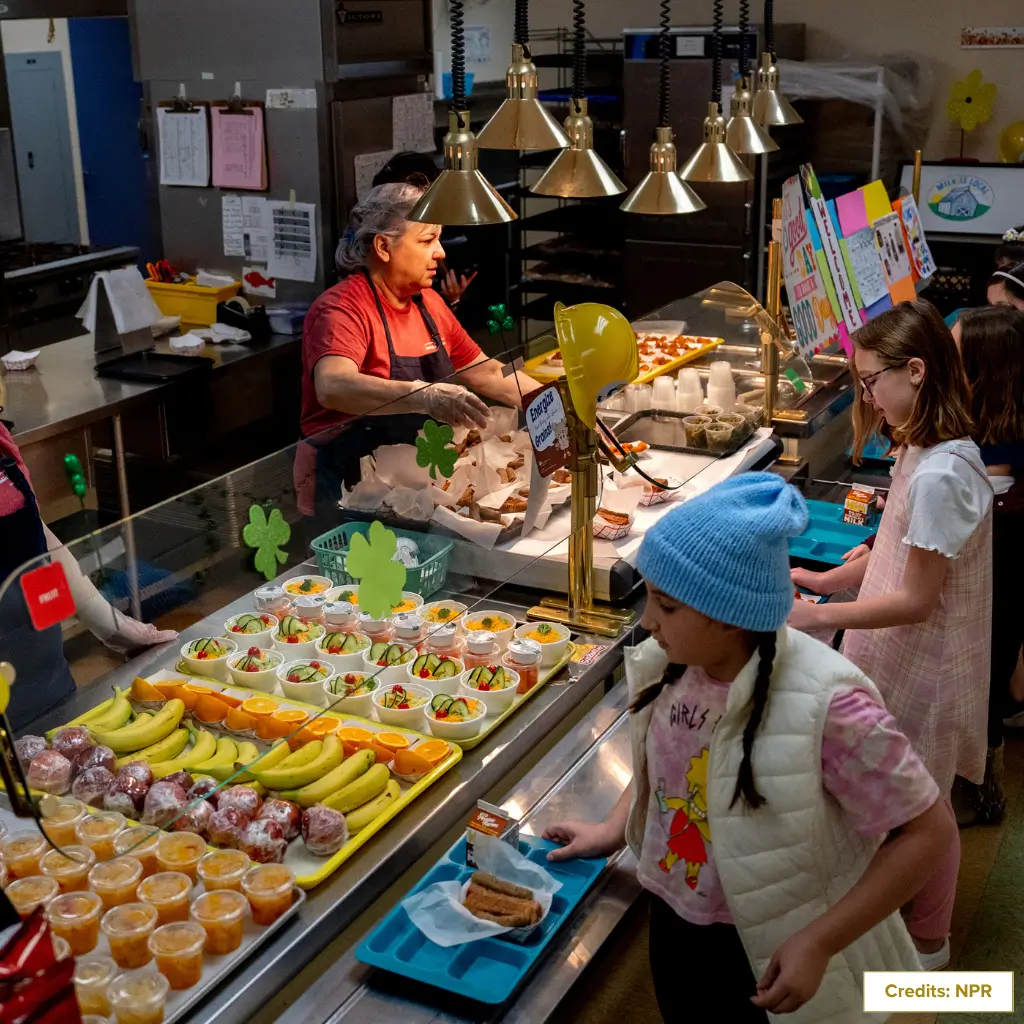
Today, forward-thinking schools are ditching rigid rules and turning cafeterias into collaborative spaces. Here’s how:
- Student Food Councils: Kids help test, vote, and review menus. Student reps help decide what gets served, especially in middle school cafeteria programs and high school lunch rooms.
- Parent & Community Forums: Schools now include parents in shaping policy regarding food allergens, cultural needs, and costs.
- Taste Tests & Sample Days: Letting students try dishes before adding them to the menu helps avoid backlash and waste.
- Cultural Nutrition Consultants: Schools now bring in professionals who understand dietary traditions to craft inclusive menus.
- Educational Tie-Ins: Instead of forcing kale, schools pair it with lessons about global cuisine or sustainability, understanding = acceptance.
- Tech Tools: Apps allow parents to see ingredients and give feedback on the performance.
This collaborative approach shows promising results: better satisfaction, less waste, and healthier choices. After all, in this new model, managing a school cafeteria means listening, adapting, and respecting student voices.
Conclusion: A Look Back…and Ahead
From 50s school cafeterias serving mystery meat and milk cartons to 90s school cafeterias filled with pizza and Hi-C, school food has always mirrored society’s values. Regardless of lunchroom types, one thing hasn’t changed: what kids eat matters to everyone.
Today’s cafeterias are becoming places of innovation. They reflect a shift toward compassion, equity, and choice.
Yes, the road has been bumpy. But thanks to student involvement, parental advocacy, and common sense, we’re heading toward a future where food policies are more innovative, inclusive, and less divisive.
FAQs
Why are school lunches so often controversial?
Because food intersects with culture, health, economics, parenting, and politics, cafeteria decisions are deeply personal and socially loaded.
What’s being done to improve school food policies?
More schools are involving students and families, allowing input before changes roll out and using tech for customization.
Have cafeteria policies improved in recent years?
Yes. Many schools have moved from rigid, one-size-fits-all rules to flexible, thoughtful approaches that balance health with happiness.

